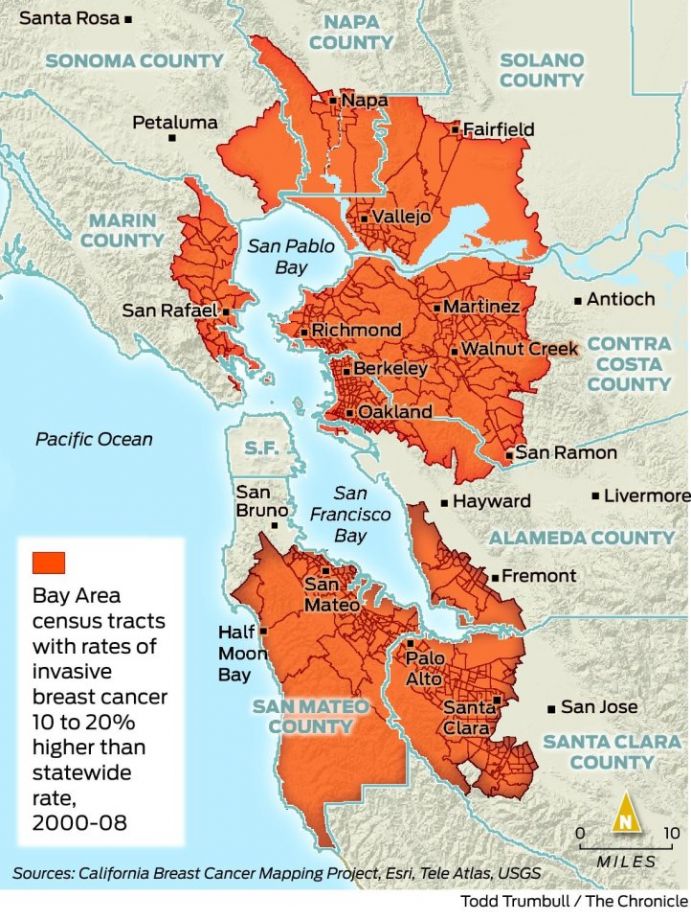Using New Mapping Techniques to Identify Elevated Breast Cancer Rates
Program
-
Focus Areas
Data, Technology & Innovation, Environmental Health, Healthy Communities -
Issues
Cancer -
Expertise
Research – Surveillance


Research by the Public Health Institute’s (PHI) California Breast Cancer Mapping Project (CBCMP), a project of the California Environmental Health Tracking Program (now Tracking California), pinpointed four previously unidentified areas of California that have invasive breast cancer rates substantially higher than the state average. As opposed to traditional breast cancer surveillance, which relies on aggregate county-level data, the CBCMP developed and implemented a protocol to map breast cancer rates within and across county boundaries by looking at data (obtained from the Cancer Registry of Greater California, or CRGC) by census tract. This identified the four areas of concern, or groups of census tracts that showed invasive breast cancer rates 10-20 percent higher than the state average between 2000-2008. The four “areas of concern” encompass sections of Ventura, Los Angeles, Riverside and Orange counties, as well as parts of the north and south Bay Area. Since these areas span sections of multiple counties, they had never been identified by traditional county-level surveillance as having elevated breast cancer rates.
Work With Us
You change the world. We do the rest. Explore fiscal sponsorship at PHI.
Support Us
Together, we can accelerate our response to public health’s most critical issues.
Find Employment
Begin your career at the Public Health Institute.
